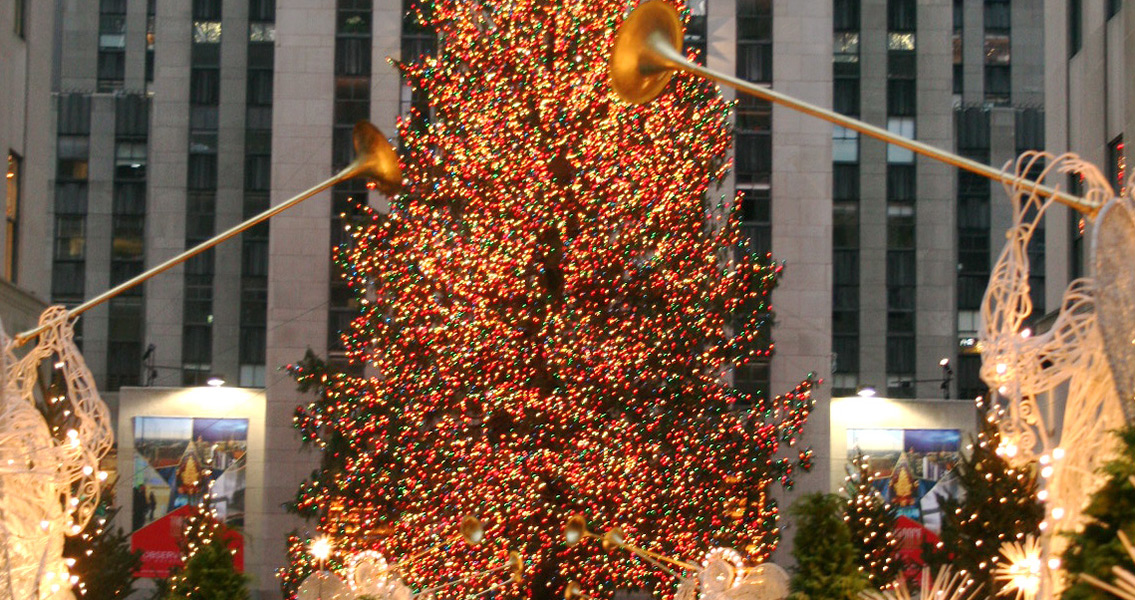<![CDATA[Christmas trees are a central part of festive celebrations for many people, adorning living rooms, shopping centres and public streets in the run up to 25th December. They are probably the most iconic Christmas decoration, but what do they have to do with the story of one of the biggest celebrations in the Christian calendar? Perhaps the most important thing to consider when trying to understand the story of the Christmas tree is the significance of evergreen plants in pagan cultures, and the symbolism of the winter solstice - the shortest day of the year. Most ancient cultures in the Northern hemisphere would celebrate the winter solstice in some way, and more often than not this would involve the use of plants - a common symbol of life, fertility and rebirth. Even the Ancient Egyptians, living in a region hardly known for its brutal winters, would fill their homes with green palm rushes around the time of the winter solstice. To them it was a celebration of the sun god Ra. In winter he was believed to suffer ill health, causing the cooler temperatures. The solstice marked the beginning of his recovery, it was a celebration of new life. Similar belief systems could be found in agricultural pagan societies in Europe. Winter marked a point of sickness or death for their sun gods, the solstice marked the point of transition after which the deities would start to recover. Evergreen trees, those which stayed alive through the coldest months, were a reminder that life would continue once the winter was over. Evergreen boughs and trees were therefore a common part of winter solstice celebrations. Vikings considered them the special plant of their sun god Balder, while early-Romans decorated their homes with evergreens during the festival of Saturnalia which honoured the god of Agriculture, Saturn. These traditions came under fire with the rise of Christianity, the Church desperate to abolish pagan customs. In the third century CE, the decorating of homes with evergreen boughs was strictly prohibited by church authorities. Exactly when the tradition of using fir trees originated is disputed, but it's is generally thought to have been in Northern Europe. At the turn of the sixteenth century, the Baltic cities of both Tallinn (in modern day Estonia) and Riga (in modern day Latvia) started to erect trees in their town squares around the time of the New Year. Exact details of what festivities took place is unclear, but it seems the trees were eventually burnt in the streets. Later in the sixteenth century, devout German Christians started to bring decorated trees into their homes, laying the foundations for the Christmas trees we see today. Some claim that it was in fact renowned Protestant reformer Martin Luther who first decorated a tree with lights. The story goes that Luther was so impressed one evening by the sight of a forest surrounded by glistening stars in the night sky, he went home and tried to recreate the scene by putting candles in the tree in his home. For centuries however, Christmas trees remained controversial, Puritan Christians seeing them as decadent and dangerously pagan. Oliver Cromwell preached against them as "heathen traditions". In the United States, although German settlers had started to put Christmas trees in their home for the Christmas holidays, many other Americans continued to reject them as pagan symbols. In 1659, the General Court of Massachusetts went as far as banning every celebration of 25th December apart from church services. It was only in the nineteenth century that Christmas trees started to gain wider acceptance on both sides of the Atlantic. In the US the continued arrival of immigrants from Europe, particularly from Germany and Ireland, undermined the Puritan influence, and Christmas trees started to appear more commonly. In the United Kingdom, Queen Victoria and her family were sketched around a Christmas tree in 1846, showing that by that point the decorations had become acceptable. The popularity of the monarch meant the trees soon became fashionable, starting to appear in homes across the country. Although some Christian groups continue to oppose the Christmas tree for its pagan roots, they are generally in the minority. Through their origins in the use of evergreen leaves in pagan solstice celebrations, via their initial adoption in Northern and Central Europe, Christmas Trees are now a common site across the globe in the run up to the festive season. ]]>
A History of the Christmas Tree From Paganism to Shopping Centres
